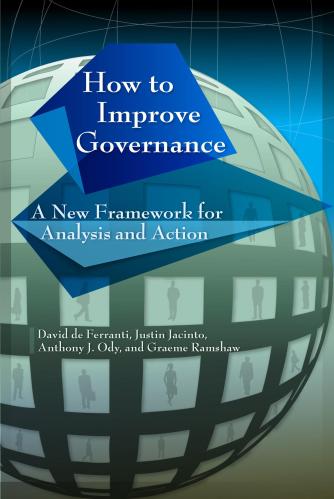It is an anxious time. The development community is fraught over a complex of issues, only a few of which are the 20 million people facing starvation in Africa, no end in sight to the devastation of Syria and the refugee exodus, the impact of the re-imposition of the global gag rule, proposed budget cuts, and possible bureaucratic reorganization. But let’s focus for a moment on two positive notes: the prospect that a highly competent and respected administrator at the United States Agency for International Development may soon be in place and the continued progress that agency is poised to make on aid transparency.
On May 10, President Donald Trump nominated Mark Green to the position of administrator of USAID. Green brings to the appointment near resume-perfect experience—a former congressman from Wisconsin who understands the political arena and the central role that Congress plays in our USAID programs, including a leadership role in the creation of the Millennium Challenge Corporation (MCC) and the U.S. initiative to address the global HIV/AIDS epidemic, known as PEPFAR; former ambassador to Tanzania where he oversaw a sizeable foreign aid program; and president of the International Republican Institute where he has learned the role of an aid implementer.
Besides the high-profile challenges that a USAID administrator faces on a daily basis, there are a multitude of management issues that can make a world of difference in the effectiveness and efficiency of our aid programs. An example of the latter is USAID’s efforts to improve the processes and technology that make quality aid data available within the agency and publicly.
During his time on the MCC board, Green would have seen how transparency helped bring independent views into the policy process and keep the organization focused on its mission. He also would have seen how the MCC’s efforts at data transparency have made it the gold standard in shining a light on how and where assistance is used.
The MCC started with the advantage of being created with transparency in its mandate and with a manageable number of client countries and data sets. USAID had the disadvantage of entering the data transparency era with multiple data systems that were not integrated and with a host of different programs scattered across the globe, each collecting data on its own set of indicators. USAID has struggled to provide comprehensive and quality information on foreign assistance, including meeting the U.S. commitment to publish assistance data to the International Aid Transparency Initiative (IATI). In 2013 and 2014, it ranked at the bottom of the “fair” category on Publish What You Fund’s annual Aid Transparency Index.
Then in 2015, USAID staff wrote a four-phase management plan to improve the quality of USAID aid information. It promptly implemented the first three phrases, with the fourth phase part of an agency-wide information transformation called Development Information Solution, which is still in process.
The result of this concerted effort is that in 2016 USAID climbed to the cusp of “good” in the index. Further progress has continued, with USAID now able to publish its own data in IATI XML format, which will allow it not only to improve its data but eventually to publish humanitarian data on a timely basis. It also has encouraged its missions to improve their data use, resulting in new solutions that will be applicable across the agency.
New leadership could take the agency to the next level. Ensuring full funding and execution of the information transformation will help bring USAID into the 21st century on managing and using data. Further, agency leadership can be the critical voice on data use by encouraging staff to use IATI data to inform decisions and manage programs and by helping recipient countries gain the capability to use IATI data as a tool for better policymaking.
These steps for more transparent and usable foreign assistance are ones that will keep USAID on a path toward having the quality information that will allow all of us—Congress, civil society, partner countries, the media, and interested Americans—access to a range of information on USAID’s investments. It also will allow USAID to manage its own programs through better planning and more evidenced-based decisions.
Given Green’s experience and demonstrated interest in the effectiveness of U.S. assistance, and his innate political instinct of the importance that the American people understand how their taxpayer dollars are used, he can lead the agency to the next level of transparency and accountability. It would be a crowning moment if USAID would soon become a global leader in the Aid Transparency Index.
The Brookings Institution is committed to quality, independence, and impact.
We are supported by a diverse array of funders. In line with our values and policies, each Brookings publication represents the sole views of its author(s).









Commentary
USAID can take transparency to the next level
June 12, 2017